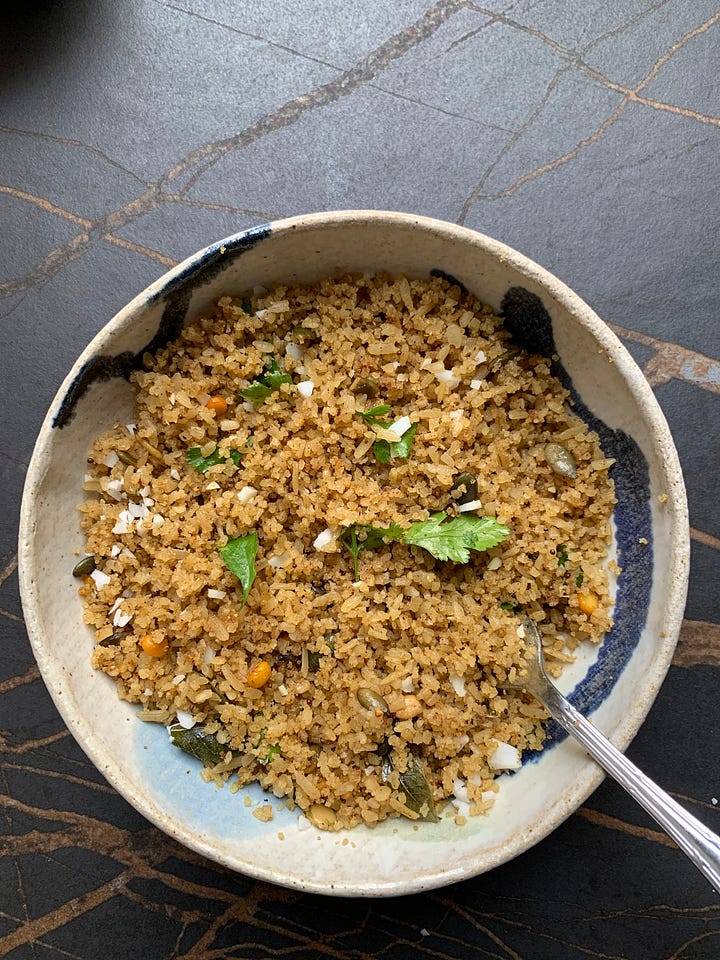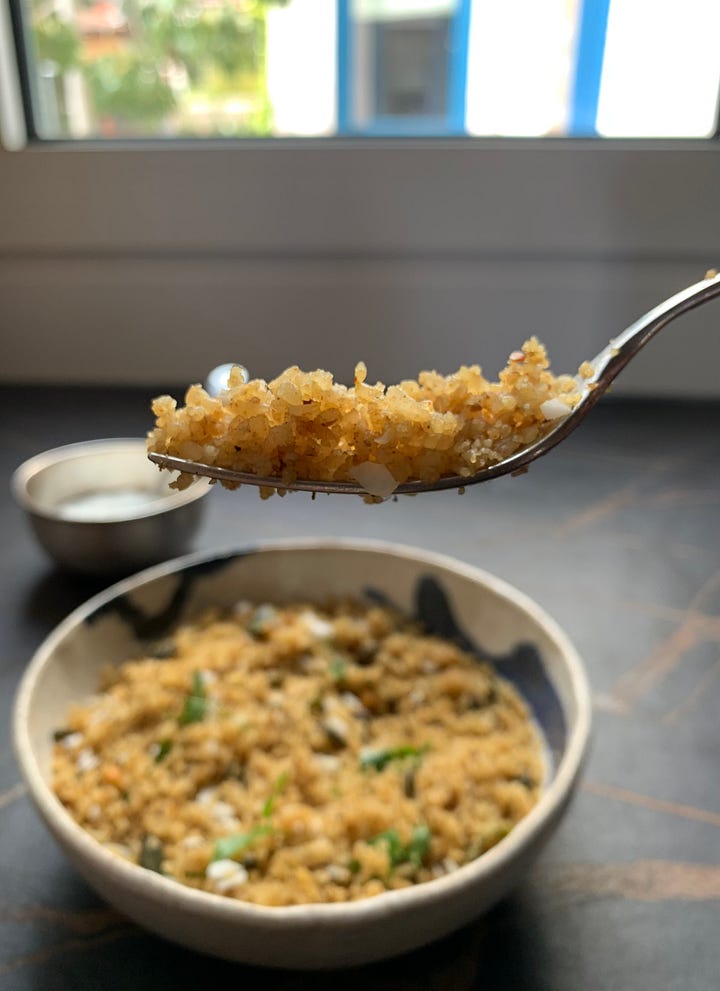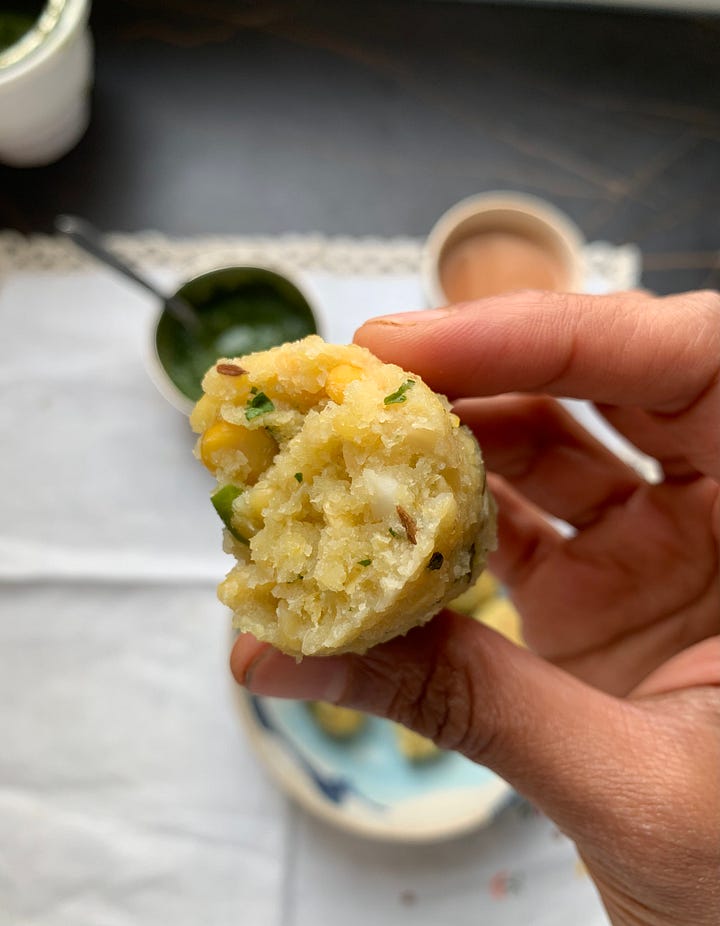Archana Pidathala’s quick snacks for friends
Recipes for huli avalakki (tangy flattened rice with tamarind and coconut) and nuchinunde (steamed lentil dumplings) and an essay on adapting traditional recipes to modern kitchens.
A Vittles subscription costs £5/month or £45/year. If you’ve been enjoying the writing then please consider subscribing to keep it running. It will give you access to the whole Vittles back catalogue – including Vittles Restaurants, Vittles Columns, and Seasons 1–7 of our themed essays.
Welcome to Vittles Recipes! In this new weekly slot, our roster of six rotating columnists will share their recipes and wisdom with you. This week’s columnist is Archana Pidathala. You can read our archive of cookery writing here.
Archana Pidathala’s quick snacks for friends
Recipes for huli avalakki (tangy flattened rice with coconut) and nuchinunde (steamed lentil dumplings) and an essay on adapting traditional recipes to a modern kitchen. Words and photographs by Archana Pidathala.




One Sunday last year, I finally made chapatis in my rental kitchen in Barcelona after resisting it for months. It took me forty minutes of fiddling with the built-in teppanyaki-style griddle to make it suitable for preparing chapatis, whereas previously I could make chapatis in ten minutes on the cast-iron tawa I used to use. Since our move from Bangalore, the alienation I have experienced in the kitchen in the first few months has been the most painful, even more so than living in a new language or finding my way in a new city. I had predicted that a move would mean adapting to new approaches in the kitchen, but hadn’t expected how much I would miss my old ways – flame stovetops resilient to heat and mess, sturdy metal cutlery that holds flavour within it.
When I try to bring recipes created in my Indian kitchens to this hi-tech Barcelona one, there is a kind of resistance, as familiar recipes and ingredients struggle to morph into new forms. I felt this struggle again on a recent spring afternoon while making nuchinunde (steamed lentil dumplings) and huli avalakki (tangy flattened rice with tamarind and coconut), recipes I learned from my late grandmother-in-law, or ajji, as I called her. On days when I feel fragile, I remember ajji’s resilient spirit and find myself turning to the flavours and textures she taught me. I try to imagine what she would say if she saw the immersion blender I use instead of a mortar and pestle to grind spices and make batter, or the delicate cooktop that comes alive with the press of a button but that turns itself off, much to my frustration, every time I cook rice and a bit of water bubbles over.
When we moved, most of my kitchen – and the recipes and memories and instincts stored inside it – was left behind. But as much as I complain about this, I have found that cooking centuries-old family recipes with modern gadgetry has been a kind of reclamation, and a way to adapt. By making these recipes, far away from their origin, it feels possible to bridge the gap between my old life and this Spanish interlude, even if there is loss in the process – of flavour to the blade of a machine, or of taste to new terroir.
I often make ajji’s nuchinunde and huli avalakki as snacks for friends who come over. They are quick, easy, and reliable recipes to whip up for the new people in my life. I can feed them with ease, as ajji fed me, when I perched on her kitchen counter, watching her cook, listening to a scurry of squirrels squeaking outside.
Huli avalakki (tangy flattened rice with tamarind and coconut)
This is a dish in which coarsely crushed beaten rice – note, only thick poha (flattened rice), and not rice flakes, will work here – is soaked in sweetened tamarind water and quickly tossed in a tempering, which adds spice and crunch. Light and fluffy, with a couscous-like texture, each broken piece of rice surrenders for a brief bit in the tangy tamarind sauce before coming into its own. When I first tasted it, I can remember thinking, So much flavour with such little effort!



